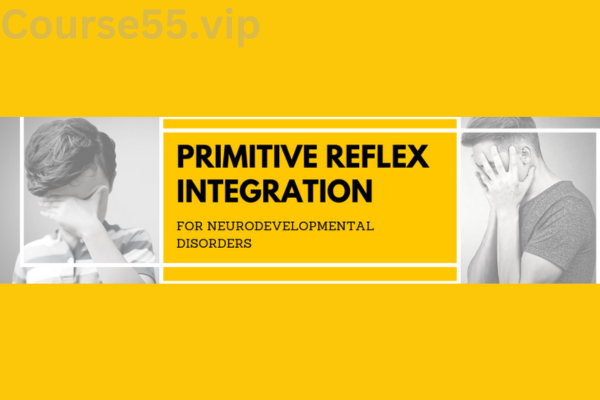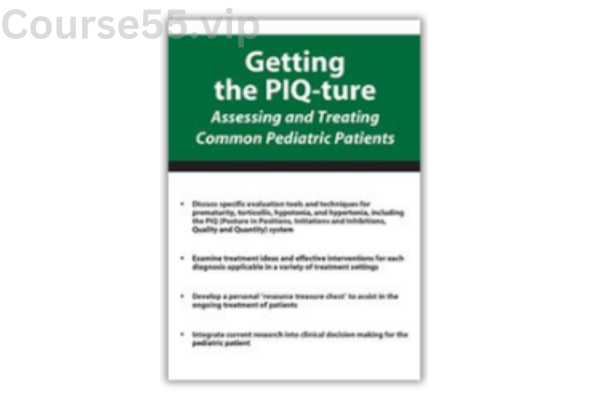-
×
 Acceptance and Commitment Therapy (ACT) Made Easy: Innovative Techniques for Depression, Anxiety, Trauma & Personality Disorders By Douglas Fogel - PESI
1 × $23.10
Acceptance and Commitment Therapy (ACT) Made Easy: Innovative Techniques for Depression, Anxiety, Trauma & Personality Disorders By Douglas Fogel - PESI
1 × $23.10 -
×
 Couples on the Brink: When Is Enough Enough? By Terry Real - PESI
1 × $23.10
Couples on the Brink: When Is Enough Enough? By Terry Real - PESI
1 × $23.10 -
×
 Self-Regulation & Executive Functioning in Children and Adolescents: Visual Strategies and Hands-on Techniques to Provide Structure, Predictability, and Routines By Kathy Morris
1 × $23.10
Self-Regulation & Executive Functioning in Children and Adolescents: Visual Strategies and Hands-on Techniques to Provide Structure, Predictability, and Routines By Kathy Morris
1 × $23.10 -
×
 New Rules for Treating Trauma: Integrating Neuroscience for Resilience, Connection and Post-Traumatic Growth By Courtney Armstrong - PESI
1 × $23.10
New Rules for Treating Trauma: Integrating Neuroscience for Resilience, Connection and Post-Traumatic Growth By Courtney Armstrong - PESI
1 × $23.10 -
×
 Ultimate Guide Technical Trading
1 × $23.10
Ultimate Guide Technical Trading
1 × $23.10 -
×
 Orthopedic Challenges: Expert Strategies to Avoid Harm & Enhance Healing By William Mazzocco - PESI
1 × $23.10
Orthopedic Challenges: Expert Strategies to Avoid Harm & Enhance Healing By William Mazzocco - PESI
1 × $23.10 -
×
 Legal Issues in Behavioral Health Maryland: Legal and Ethical Considerations By Lois Fenner - PESI
1 × $23.10
Legal Issues in Behavioral Health Maryland: Legal and Ethical Considerations By Lois Fenner - PESI
1 × $23.10 -
×
 Rewire the Anxious Brain: Neuroscience-Informed Treatment of Anxiety, Panic and Worry By Marwa Azab - PESI
1 × $23.10
Rewire the Anxious Brain: Neuroscience-Informed Treatment of Anxiety, Panic and Worry By Marwa Azab - PESI
1 × $23.10 -
×
 Primitive Reflex Integration for Neurodevelopmental Disorders By Robert Melillo & Kathy Johnson - PESI
1 × $23.10
Primitive Reflex Integration for Neurodevelopmental Disorders By Robert Melillo & Kathy Johnson - PESI
1 × $23.10 -
×
 Spartan Renko 2.0 Workshop 2017
1 × $23.10
Spartan Renko 2.0 Workshop 2017
1 × $23.10 -
×
 The Complete Crowdfunding PR System By Salvador Briggman - CrowdCrux
1 × $23.10
The Complete Crowdfunding PR System By Salvador Briggman - CrowdCrux
1 × $23.10 -
×
 Mindfulness-Based Stress Reduction for Teens By Gina Biegel - PESI
1 × $23.10
Mindfulness-Based Stress Reduction for Teens By Gina Biegel - PESI
1 × $23.10 -
×
 Carl Bretzke Bundle
1 × $46.00
Carl Bretzke Bundle
1 × $46.00 -
×
 Fast Track 6 Figure Formula By Ray Higdon & Mark Hoverson
1 × $23.10
Fast Track 6 Figure Formula By Ray Higdon & Mark Hoverson
1 × $23.10 -
×
 Biofeedback & Mind-Body Training Tools for Anxiety, ADHD, PTSD and Depression: Enhance Your Clinical Skills By Angelika Sadar - PESI
1 × $23.10
Biofeedback & Mind-Body Training Tools for Anxiety, ADHD, PTSD and Depression: Enhance Your Clinical Skills By Angelika Sadar - PESI
1 × $23.10 -
×
 Ten Best-Ever Anxiety Treatment Techniques By Margaret Wehrenberg - PESI
1 × $23.10
Ten Best-Ever Anxiety Treatment Techniques By Margaret Wehrenberg - PESI
1 × $23.10 -
×
 Writing Email Copy for B2B Companies By AWAI
1 × $23.10
Writing Email Copy for B2B Companies By AWAI
1 × $23.10 -
×
 Healthy Hormone Done-For-You By Lorene Sauro
1 × $23.10
Healthy Hormone Done-For-You By Lorene Sauro
1 × $23.10 -
×
 Black Gold Strategies by Basecamptrading
1 × $23.10
Black Gold Strategies by Basecamptrading
1 × $23.10 -
×
 Outbursts, Oppositional Defiance and Frustration in the Classroom: Self-Regulation Techniques to Reduce the Frequency, Severity and Duration of Problematic Behavior By Laura Ehlert - PESI
1 × $23.10
Outbursts, Oppositional Defiance and Frustration in the Classroom: Self-Regulation Techniques to Reduce the Frequency, Severity and Duration of Problematic Behavior By Laura Ehlert - PESI
1 × $23.10 -
×
 Understanding the Needs of the Dying: Bringing Hope, Comfort and Love to Life's Final Chapter By David Kessler - PESI
1 × $23.10
Understanding the Needs of the Dying: Bringing Hope, Comfort and Love to Life's Final Chapter By David Kessler - PESI
1 × $23.10 -
×
 Advances in Motor Control and Learning for Neurological Rehab By Ben Sidaway - PESI
1 × $23.10
Advances in Motor Control and Learning for Neurological Rehab By Ben Sidaway - PESI
1 × $23.10 -
×
 Barb Stepp’s NLP Master Practitioner By Barbara Stepp
1 × $23.10
Barb Stepp’s NLP Master Practitioner By Barbara Stepp
1 × $23.10 -
×
 Utah Legal and Ethical Issues for Mental Health Clinicians By Susan Lewis - PESI
1 × $23.10
Utah Legal and Ethical Issues for Mental Health Clinicians By Susan Lewis - PESI
1 × $23.10 -
×
 Intermediate To Advanced Breath-Control Course By Simon Borg-Olivier
1 × $39.00
Intermediate To Advanced Breath-Control Course By Simon Borg-Olivier
1 × $39.00
Getting the PIQ-ture Assessing and Treating Common Pediatric Patients By Michelle Fryt Linehan – PESI
$199.00 Original price was: $199.00.$23.10Current price is: $23.10.
SKU: C55vip.11111WPfxgpQb
Category: Download
Tags: Getting the PIQ-ture Assessing, Michelle Fryt Linehan, Michelle Fryt Linehan - PESI, PIQ-ture, Treating Common Pediatric Patients
Getting the Piq-ture: Assessing and Treating Common Pediatric Patients – Digital Download!

Getting the PIQ-ture Assessing and Treating Common Pediatric Patients By Michelle Fryt Linehan – PESI
Overview

Understanding Pediatric Care: Evaluating and Managing Common Childhood Conditions
In the dynamic field of pediatric healthcare, practitioners need reliable tools and strategies to assess and manage a wide range of conditions affecting children. Getting the Piq-ture: Assessing and Treating Common Pediatric Patients, authored by Michelle Fryt Linehan, stands out as a valuable resource for professionals working in rehabilitation and educational settings. This comprehensive guide focuses on evaluation methods and treatment approaches for common neuromuscular and movement disorders in pediatric patients. With over 26 years of experience as a licensed physical therapist and pediatric certified specialist, Michelle provides insights that empower clinicians to refine their treatment plans for children facing challenges such as hypotonia, hypertonia, torticollis, and developmental delays related to prematurity.
A Systematic Approach to Pediatric Assessment
One of the defining aspects of Getting the Piq-ture is its structured framework for assessing pediatric patients. The course introduces the Piq-ture assessment tool, designed to evaluate crucial factors such as posture in different positions, motor activation and inhibition, as well as movement patterns in terms of both quality and quantity. This systematic approach enables practitioners to develop a comprehensive understanding of each child’s unique needs, allowing for the creation of personalized intervention plans that align with their developmental progress.
Standardized and non-standardized assessment tools play a pivotal role in pediatric care. Tools such as the Bayley Scales of Infant Development and the Peabody Developmental Motor Scales offer measurable benchmarks for evaluating gross and fine motor skills. These assessments provide objective insights that guide treatment planning, particularly for children experiencing developmental delays or motor impairments. Establishing a solid foundation through thorough assessment ensures that interventions are both targeted and effective.
Key Pediatric Assessment Tools
A variety of assessment instruments are used in pediatric therapy to help clinicians gain a clearer picture of a child’s abilities and challenges. Below are some of the most widely utilized tools that align with the principles outlined in Linehan’s course:
| Assessment Tool | Primary Purpose | Key Features |
|---|---|---|
| Bayley Scales of Infant Development | Measures developmental progress in young children | Evaluates cognitive, language, motor, social-emotional, and adaptive skills |
| Peabody Developmental Motor Scales | Assesses fine and gross motor skills | Incorporates both qualitative and quantitative assessments |
| Pediatric Evaluation of Disability Inventory (PEDI) | Evaluates functional independence in children with disabilities | Focuses on self-care, mobility, and social interactions |
| Bruininks-Oseretsky Test of Motor Proficiency | Measures overall motor coordination and control | Provides a comprehensive analysis of both fine and gross motor skills |
By utilizing these assessment tools, healthcare providers can collect essential data that informs their therapeutic decisions. Linehan’s course not only introduces these tools but also emphasizes their application across various pediatric patient populations, ensuring a well-rounded approach to care.
Recognizing and Addressing Pediatric Conditions
The increasing prevalence of conditions such as cerebral palsy and other neuromuscular disorders underscores the need for healthcare providers to adopt informed and adaptable strategies when treating pediatric patients. A growing awareness of movement disorders related to muscle tone variations has heightened the demand for precise assessment and intervention techniques.
Linehan’s course explores the complexities of evaluating children with different conditions, emphasizing the necessity of individualized assessments. For instance, children with hypotonia—a condition marked by reduced muscle tone—require a comprehensive evaluation that extends beyond physical assessments to include environmental and familial factors. In contrast, hypertonia, characterized by increased muscle stiffness, calls for a different approach that examines spastic and dystonic movement patterns to develop appropriate treatment plans.
Comprehensive Evaluation Methods
To ensure accurate assessments, the course highlights multiple evaluation techniques that combine objective and subjective measurements. This balanced approach provides a complete picture of a child’s functional abilities, enabling clinicians to formulate well-rounded intervention strategies. Key evaluation methods covered in the course include:
• Objective measurements – Utilizing standardized assessment tools to quantify motor function.
• Subjective evaluations – Gathering insights from caregiver reports, clinician observations, and structured play-based interactions.
• Technology-based assessments – Employing digital tools to track movement patterns and identify functional impairments.
By integrating these diverse assessment methods, healthcare providers can create targeted, evidence-based treatment plans that address the specific needs of pediatric patients.
Condition-Specific Intervention Strategies
Following a thorough assessment, the next crucial step is to develop tailored intervention plans. Getting the Piq-ture outlines a variety of treatment techniques, ensuring that each child receives care that is both effective and appropriate for their condition.
For children with hypotonia, interventions focus on strengthening exercises that promote muscle activation and coordination while maintaining an engaging and adaptable approach. In contrast, treating torticollis, a condition that results in abnormal neck positioning, involves gentle stretching routines, positional therapy, and guided motor exercises. The course emphasizes the importance of interdisciplinary collaboration, involving occupational therapists, educators, and caregivers to ensure comprehensive and cohesive treatment plans.
Evidence-Based Therapeutic Approaches
A strong emphasis on evidence-based care ensures that clinicians remain informed about the latest advancements in pediatric therapy. Some of the most effective approaches covered in the course include:
• Targeted therapeutic exercises – Strength-building routines that enhance motor function in children with low or high muscle tone.
• Sensory integration therapy – Strategies to support children experiencing sensory processing difficulties, often associated with developmental delays.
• Play-based interventions – Activities that encourage natural movement and engagement, helping to improve motor coordination and social interaction.
By incorporating these scientifically validated approaches, clinicians can provide treatment plans that foster long-term progress while respecting each child’s unique developmental journey.
Final Thoughts: A Comprehensive Resource for Pediatric Care
Getting the Piq-ture: Assessing and Treating Common Pediatric Patients by Michelle Fryt Linehan serves as an invaluable tool for healthcare providers dedicated to improving pediatric patient outcomes. This course offers a well-structured approach to evaluating and managing conditions such as hypotonia, hypertonia, and torticollis, equipping practitioners with practical strategies for enhancing patient care.
Through a blend of structured learning and hands-on application, participants gain the skills necessary to implement effective assessment techniques and intervention strategies in their clinical practice. Whether you are a seasoned professional or new to pediatric therapy, this resource enhances your ability to deliver high-quality, individualized care that positively impacts children’s development and well-being.
Frequently Asked Questions:
Business Model Innovation: We operate a group buying strategy, allowing participants to share costs and access popular courses at reduced prices. This model benefits individuals with limited financial resources, despite concerns from content creators about distribution methods.
Legal Considerations: The legality of our operations involves complex issues. Although we don’t have explicit permission from course creators to resell their content, there are no specific resale restrictions stated at the time of purchase. This ambiguity creates an opportunity for us to provide affordable educational resources.
Quality Control: We ensure that all course materials purchased are identical to those offered directly by the creators. However, it’s important to understand that we are not official providers. As such, our offerings do not include:
– Live coaching calls or sessions with the course author.
– Access to exclusive author-controlled groups or portals.
– Membership in private forums.
– Direct email support from the author or their team.
We aim to reduce the cost barrier in education by offering these courses independently, without the premium services available through official channels. We appreciate your understanding of our unique approach.
Be the first to review “Getting the PIQ-ture Assessing and Treating Common Pediatric Patients By Michelle Fryt Linehan – PESI” Cancel reply
You must be logged in to post a review.





Reviews
There are no reviews yet.